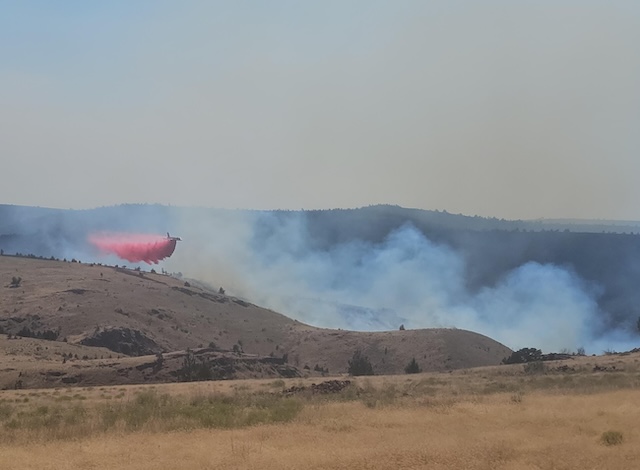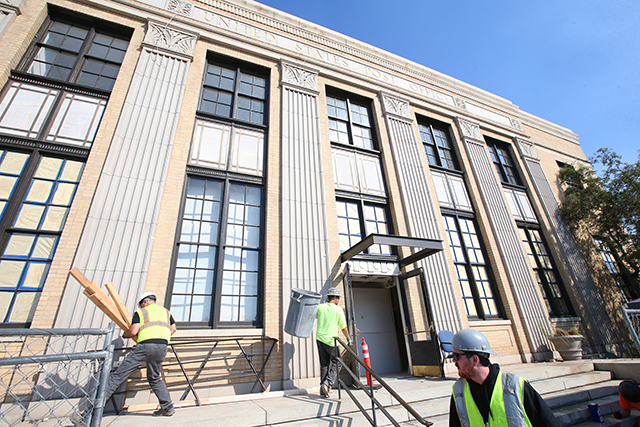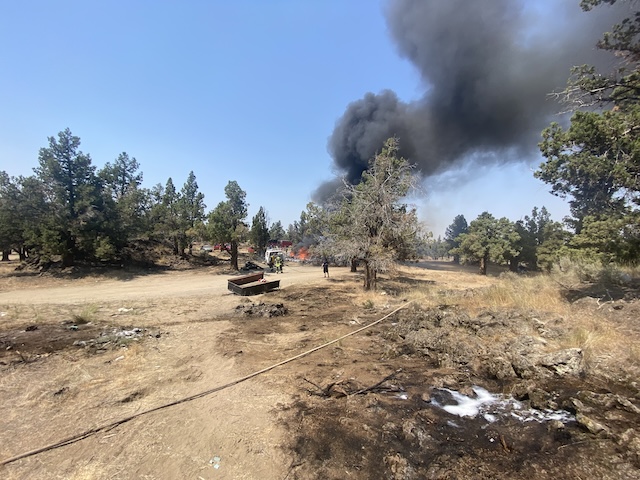A hidden treasure for kayaking on clear, still waters
Published 5:00 am Sunday, May 26, 2013
When I moved to Berlin more than a decade ago, I read that what seemed to be hundreds of construction cranes across the city could swerve and escalate in tandem, a triumphant chorus of reunification and progress. There was a lot of talk back then about what the new country would look like and how East Germany would reinvent itself.
I remember at that time, too, looking at a map of Berlin and its environs and fixating on the north, where hundreds of lakes fanned out from east to west. As an avid kayaker, I was intrigued: Every lake appeared linked by faint blue lines. Overlapping necklaces of water stretched across the former Prussian countryside, from the Polish border almost to Hamburg and as far as the Baltic Sea. Eager to escape the heat, dust and dancing cranes that summer, in 2002, I made my first trip to the northern region known as the Mecklenburg Lake Plains.
Trending
That trip was the first of many, primarily to kayak but also to admire elaborate manor houses and castles, hike through a national park and spend a few days on a yacht crisscrossing the largest of the lakes, Lake Muritz. No two trips have been the same, but some things never fail to make an impression on me, particularly when I kayak: the silence, the desolation, the luscious pines and thickly planted birches that jut up to the lake shores, and the conga lines of rustic and compact boathouses that hug the banks. I’ve paddled for days here, passing through half a dozen lakes and canals, and been alone throughout.
Berlin has evolved, to be sure, but very little has changed since my first visit to the lakes. I used to rely on public transportation to get there from Berlin but more recently have made the 21⁄2-hour drive because the bus and train schedules are too limiting. That, and the iffy weather, might be why the region is one of Europe’s best-kept secrets.
Word-of-mouth treasure
Last September, I went to the western edge of the region to see Krakow am See, a town nestled between two lakes that gives you the feeling of being on an island. A woman who answered the phone at the district’s tourist association helped me search for accommodations. At one point she told me, “Ich weiss ein Haus am See,” or, “I know a house at the lake.” I waited for her to give me the name. She waited, too, and then laughed and said, “No, that is the name.”
It might be this play on words that has kept Ich weiss ein Haus am See a word-of-mouth treasure; the woman on the phone told me that it barely advertises. Adding to the mystery, she said offhandedly, “Oh, and the restaurant has a Michelin star.” I quickly got off the phone with her, called the inn and booked a room.
I got lost twice in the town trying to reach the inn, finally landing on a bumpy dirt road that wove through camping grounds and then ended at an isolated and unassuming, but well-kept, white and green bungalow with a white picket fence and hedges surrounding it.
Trending
With just 12 rooms to let, all are simply but warmly decorated in nautical hues of blue and white. Some have alcoves, others have balconies draped in wisteria. Mine also had a dreamy view of a solitary and muscular oak tree and a wooden swing, and beyond, I could see a rowboat tethered to a dock, bobbing on the gentle tide. It was overcast when I arrived, so I put off kayaking for the next day and cuddled up on a cushiony armchair with a book. I was, however, more preoccupied with what awaited me at that evening’s meal.
Just a dozen tables fill the octagon-shaped restaurant, and the menu features both classical and eclectic French cuisine. The evening I was there, the most flavorful courses were, appropriately, fish, particularly arctic sea trout with wakame algae salad and a mild wasabi sauce. Then there was pike fillet, followed by mussel souffle atop sugar cane shoots and beurre blanc. Certainly, the restaurant had well earned its star in 1996, but the fact that it was out here in the sticks, and that the founding chef, Michael Laumen, was self-taught, made my meal most memorable. Who needs advertising? This place can silently rest on its laurels awhile.
Kayaking in Mirow
A few weeks later, despite a slight drizzle, I drove to the town of Malchow, where I had paddled some years before and was hopeful that sunny skies would emerge. I remembered Malchow as carved up by as many canals as Venice, and also a modern, ruby-colored hotel and restaurant overlooking the lake.
I found the stylish Rosendomizil, and settled in, ordering fresh mushroom soup and oolong tea as I watched raindrops pound the lake. But within an hour, I could see patches of sun. Rather than risk getting caught in another downpour, though, and since I had an umbrella, I decided to attempt a hike at the nearby Muritz National Park.
That night, I stayed in a bungalow behind the Strandhotel in Mirow, on the southern edge of the park, and the next morning, woke to more sunshine. I eagerly rented a kayak from the hotel and spent the day gliding across six of the lakes to the south, all of which are joined by canals looping back to Mirow. I wasn’t alone out there that day; boathouse owners and other kayakers seemed just as giddy with the sun.
A week later, I headed northeast of Berlin, since I had yet to see this area of the lake plains. Feldberg, I saw on my map, is tucked away amid a cluster of blue, an astonishing 70 lakes in all, according to my Dumont guidebook. I had to cross a tiny wooden and creaky bridge to enter the town and passed by a shipshape half-timbered inn whose balconies groaned with geraniums and hung over one of the lakes.
To my left stretched the narrow Schmaler Luzin lake, shimmering in the early autumn sun. I drove on to the kayak rental shop Boots-Berg, on the shores of the larger lake, Breiter Luzin, and paddled out, spotting just one other kayaker before reaching the canal at the farthest end.
It was breezy, and in the middle of the lake I drifted for an unhurried view of Feldberg and its lone church spire and lake promenade. I then pushed onward against the wind, passed through the canal and, paddling along the shoreline, made my way slowly back to the bridge I had driven across, as well as the inn Altes Zollhaus am Luzinsee. There, guests lounged on the terrace and waved as I cruised under the bridge to the Schmaler Luzin. The acoustics were perfect here, as the lake, said to be the most beautiful around Feldberg, is also one of the most slender, measuring no wider than 330 yards. I could practically hear the wind against dense colonies of beech trees.
A castle in Schwerin
My next visit to the lakes was in March, as winter hung on in northern Germany. One Saturday, I defied the cold and took the train up to Schwerin, the capital of the state of Mecklenburg-Vorpommern and its oldest city.
I had been there once in summer several years before and could remember the impressive neo-Gothic castle surrounded by water, perched on an island. A friend and I had actually, rather majestically, approached it by a steamboat that summer, which docks alongside the causeway leading to the castle and its stately park with leafy walkways and reproductions of Greek statues. I was curious what the castle looked like in winter.
Part of it was covered in scaffolding during my visit, which seems to be often the case with public buildings in Berlin and the rest of Germany, forever in a state of upkeep, albeit on a smaller scale than all those cranes around the capital a decade ago. Schwerin’s castle is now used for the state parliament, but on the second and third floors visitors can take in the sumptuous reception chambers and state rooms, all richly carved and painted, as well as porcelain from Meissen and Berlin.
I was glad to escape the cold and wind, and especially liked the Meissen collection and the throne room, with its imposing baldachin. Truth be told, though, I drifted off to the windows a lot to gaze out at the water, parts of which were still covered in ice. But in the distance, I could see dark blue waters, beckoning already to me and my paddle.








